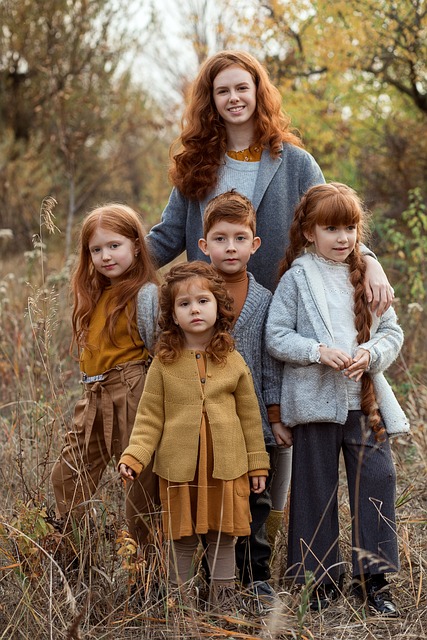Floral arrangements in funeral services are deeply significant, serving as a profound tribute that honors the deceased and comforts mourners. These arrangements transcend mere decoration to become silent conveyors of emotion, symbolizing life, beauty, and hope amidst grief. The choice of specific flowers or colors is crucial, reflecting cultural traditions, personal preferences, and creating a lasting emblem of remembrance. In funeral planning, collaboration with a skilled funeral director is essential for selecting arrangements that resonate with the service's mood and the family's desires, ensuring each detail is thoughtfully integrated. A funeral director's expertise in floral etiquette and their knowledge of cultural nuances are vital in guiding families to create a ceremony that honors the deceased's life and legacy. Funeral services with carefully curated floral tributes, under the guidance of a funeral director, become a meaningful and personal experience, fostering an atmosphere that supports grieving and remembrance. The article emphasizes the importance of these arrangements in funeral planning and how they are integral to healing and remembrance for those who mourn, serving as a testament to the care and respect paid to the deceased through the thoughtful and professional efforts of funeral directors.
navigating the nuances of arranging flowers for funerals can be a sensitive yet meaningful task. This article delves into the profound impact of floral arrangements within funeral services, guiding readers through the selection process for funeral planning. From understanding the symbolic gestures these blooms convey to the practical role of a funeral director in curating such tributes, each section offers insights into casket sprays, wreaths, and more. We also explore how personal touches with unique flower arrangements can celebrate the life of the deceased while adhering to cultural etiquette. Whether you’re planning a service or seeking to understand the significance behind these choices, this guide provides a comprehensive overview of the art of floral tributes in memorialization.
- Understanding the Significance of Floral Arrangements in Funeral Services
- Choosing the Right Flowers for a Funeral: A Guide for Funeral Planning
- The Role of a Funeral Director in Selecting and Placing Floral Tributes
- Casket Sprays and Flower Wreaths: Sympathetic and Elegant Memorial Options
- Personalizing Memorials with Special Flower Arrangements
- Etiquette and Cultural Considerations in Funeral Floral Arrangements
Understanding the Significance of Floral Arrangements in Funeral Services

Floral arrangements are an integral aspect of funeral services, serving as a poignant and lasting tribute to the deceased. In the context of funeral planning, these arrangements not only reflect the personality and life of the individual but also offer comfort to grieving loved ones. A thoughtfully chosen bouquet or large centerpiece can convey a wealth of emotions and messages without words. Flowers often represent the essence of life, beauty, and hope amidst loss, making them a fitting accompaniment to the solemnity of funeral services. The selection of specific flowers or colors can also honor cultural traditions or the individual’s preferences, thus becoming a tangible symbol of remembrance.
When entrusted with the task of funeral planning, working closely with a funeral director is beneficial. These professionals are well-versed in the nuances of floral etiquette and can assist in curating arrangements that align with the service’s tone and the family’s expectations. From lush sprays of lavender for a peaceful send-off to delicate white roses symbolizing innocence, the funeral director ensures every detail is considered. This expertise helps families navigate this sensitive phase, making the experience as meaningful and as personalized as possible. Through the careful arrangement of flowers, funeral directors aid in creating a ceremony that honors both the life lived and the legacy left behind.
Choosing the Right Flowers for a Funeral: A Guide for Funeral Planning

When arranging flowers for a funeral, selecting the appropriate blooms is a significant aspect of funeral services and reflects the sentiment you wish to convey. The right flowers can serve as a comforting presence during this somber occasion and provide an enduring symbol of remembrance. In funeral planning, it’s essential to consider the preferences and cultural significance of the deceased or their family. Traditional choices like lilies, roses, and carnations are widely recognized and convey deep feelings of sympathy and respect. Yet, personalizing the floral arrangements with favorite flowers or colors can also be a thoughtful gesture that celebrates the life lived. A skilled funeral director can guide you through these decisions, ensuring that each arrangement not only complements the funeral service but also honors the legacy of the one who has passed. They can advise on the best choices for flower freshness and longevity, as well as assist in arranging these tributes to be placed appropriately within the funeral venue. This thoughtful approach helps to create a meaningful atmosphere during the funeral services, allowing friends and family to grieve and remember in a serene environment.
The Role of a Funeral Director in Selecting and Placing Floral Tributes

During funeral services, floral tributes serve as a poignant expression of sympathy and respect for the deceased and their loved ones. The role of a funeral director in this delicate process is pivotal. They guide the bereaved through the often complex decisions involved in selecting and placing these tributes. Their expertise ensures that every arrangement—from a simple posy to a grand spray—is positioned with reverence, reflecting the personality and wishes of the departed. The funeral director’s knowledge of floral symbolism is particularly important, as they help the family select flowers that are meaningful and appropriate for the service, such as lilies for innocence or roses for love. This meticulous attention to detail not only enhances the ambiance of the funeral services but also provides a focal point for mourners to pay their respects and celebrate the life that was lived.
In the realm of funeral planning, the funeral director’s role extends beyond mere coordination; they become an advocate for the family’s desires. Their sensitivity to the emotional context of each unique situation allows them to offer guidance on floral arrangements that are both beautiful and comforting. They liaise with florists to ensure that the chosen flowers are of the highest quality, delivered in a timely manner, and placed at the service and burial sites as intended. This level of professionalism and care underscores the importance of the funeral director’s role in this aspect of funeral services, ensuring that the tribute is a fitting tributary to the life celebrated and a source of comfort to those who mourn.
Casket Sprays and Flower Wreaths: Sympathetic and Elegant Memorial Options

Casket sprays and flower wreaths serve as poignant and elegant tributes during funeral services, offering a visual representation of remembrance and respect. These arrangements are carefully crafted to convey the sentiments of those who mourn and honor the life of the deceased. A casket spray, often placed directly on or near the casket, creates an enveloping embrace with its circular form, allowing for a focal point that can be centered on during services. It typically consists of an array of flowers, both in bloom and filler types, which are artfully arranged to radiate a sense of comfort and dignity. The size and design of casket sprays can be tailored to reflect the personality, interests, or preferences of the departed, making them deeply personal expressions of love and farewell.
Flower wreaths, another timeless choice for funeral services, are woven circlets that combine various blooms, greenery, and sometimes, other natural elements like leaves or berries. These wreaths symbolize the cycle of life and eternal memory, making them a fitting memorial option. They can be hung on a wall or lying upon the casket, serving as both a focal point and a keepsake for those who attend funeral planning sessions. The funeral director plays an integral role in guiding families through the selection process, ensuring that each floral tribute aligns with the family’s wishes and the deceased’s legacy. Whether opting for the classic elegance of a wreath or the encompassing embrace of a casket spray, these floral arrangements underscore the solemnity of the occasion while providing a serene, contemplative ambiance during funeral services.
Personalizing Memorials with Special Flower Arrangements

When arranging flowers for funerals, personalizing memorials can be a meaningful way to honor the deceased and provide comfort to those who mourn. Funeral services often incorporate floral arrangements as a tribute to the life lived and the legacy left behind. Incorporating the loved one’s favorite blooms or colors into the funeral planning process allows for a unique expression of affection and remembrance. A thoughtful flower arrangement can convey deep emotions that words sometimes cannot, offering solace during this poignant time.
Working closely with a funeral director can ensure that these personal touches are seamlessly integrated into the ceremony. The funeral director’s expertise is invaluable, as they understand the delicate balance between maintaining tradition and infusing personal flair. They can guide families through the options available, from casket sprays and wreaths to individual flowers or floral crosses, all while respecting the deceased’s personality and preferences. This collaboration between family and director results in funeral services that are not only solemn but also celebrate the life of the one who has passed, with each petal serving as a symbol of eternal love and enduring memories.
Etiquette and Cultural Considerations in Funeral Floral Arrangements

When arranging flowers for funeral services, sensitivity to both etiquette and cultural considerations is paramount. Traditional funeral floral arrangements often convey respect and mourning. Common choices include wreaths, sprays, and standing crosses, which are commonly found in many funeral services. These arrangements serve as a tangible symbol of remembrance and the love one holds for the deceased. In contemporary funeral planning, it is essential to consider the preferences and beliefs of both the family of the deceased and the cultural context within which the funeral director operates. Different cultures have distinct floral symbols and practices; for instance, white lilies might be a universal symbol of innocence and purity, yet their significance might vary in different cultural traditions. It is the responsibility of the funeral director to guide families through these choices with respect and understanding, ensuring that the arrangements reflect the life and legacy of the individual while honoring the sensibilities of the attendees. By doing so, the funeral service becomes a meaningful and fitting tribute, allowing those in mourning to express their sentiments in a manner that is both culturally appropriate and comforting.
In conclusion, flowers have long played a significant role in funeral services, serving as both a symbol of farewell and a tribute to life. Through careful selection and thoughtful placement, floral arrangements can offer comfort, convey respect, and honor the memory of the deceased. Whether one is engaging in funeral planning or a funeral director is guiding a grieving family, understanding the nuances of these arrangements is paramount. From casket sprays to wreaths, and personalized memorial options, each choice carries meaning and emotional weight. As a final note, it’s crucial to consider cultural etiquette when selecting floral tributes, ensuring that they align with the traditions and beliefs of those involved. By doing so, funeral services are not only an opportunity for remembrance but also a reflection of the life lived and the legacy left behind.
